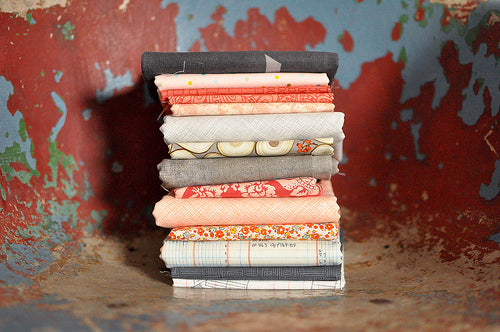
Waste disposal and management is one of the most pressing and growing problems of the world today and unfortunately, fashion is a major contributor to this. With the rise of fast fashion is the rise of used and old clothing ending up in landfills too. We have to bear in mind that natural fibers take years to decompose and synthetic fibers do not decompose at all! So clothes and textiles that end up in landfills become pollutants over time.
 Just a mountain of used clothes. (IMG SOURCE: magazine.avocadogreenmattress.com)
Just a mountain of used clothes. (IMG SOURCE: magazine.avocadogreenmattress.com)
The good thing is clothing brands and designers are now aware of this and are exerting effort to be parts of the solution. Demand for alternative, sustainable fabric sources is in the rise and has encouraged companies to develop technologies to answer this, including fabrics from the most unlikely source.
Like plastic. Plastic is our number one pollutant. The sheer number of plastic bottles that end up in landfills and oceans is staggering! The good news is, recycling companies now utilize technologies that can extract polyethylene terephthalate or PET from these plastic bottles and convert them into polyester yarns! These recovered polyester yarns are then spun, woven, dyed into new fabrics and re-introduced in the fashion industry. And we all know how versatile polyester is! It can be transformed into almost anything --- jackets, pants, sports bra, and bags! The most positive impact of recycling plastics into polyester fabric is it decreases the usage of petroleum. So when you wear something made out of recycled polyester fabrics you have instantly lessened your carbon footprint as well.
Recycling cotton is also now gaining popularity among ethical designers too. It is a known fact that producing new cotton requires large amounts of water to grow and dye it. So recycling it definitely helps in the conservation of earth’s water. Usually, recycling companies sort old cotton fabrics by color before extracting their original fibers for spinning and weaving or knitting. This sorting process eliminates the dyeing process which in turn eliminates additional water consumption. Some incorporate new cotton into the recycled ones for strength support. Old clothes made out of polyester and nylon are also being recycled. They are shredded and turned into chips before they are burned and spun into new polyester fabrics.
 An Upcycled Refashioned Cotton Sweaters (IMG SRC: Pinterest)
An Upcycled Refashioned Cotton Sweaters (IMG SRC: Pinterest)
Industrial scraps and other by-products of yarns and fabrics straight from textile factories are also recycled into other things such as mattress and carseat filling, furniture padding, wall insulations and roofing felts. This further lessens the fashion industry’s waste contribution. Recycling tires is also a growing trend in fashion. Maybe not as a recycled fabric but as materials for apparel accessories such as flip flops, sneakers, belts and waterproof bags!
The fashion industry still has a long way to go to become an eco-friendly industry, especially in terms of convincing people to patronize recycled fashion. And that’s why NOBASIC will continue to promote eco-friendly fashion until the goal is achieved.


 Just a mountain of used clothes. (IMG SOURCE: magazine.avocadogreenmattress.com)
Just a mountain of used clothes. (IMG SOURCE: magazine.avocadogreenmattress.com)






